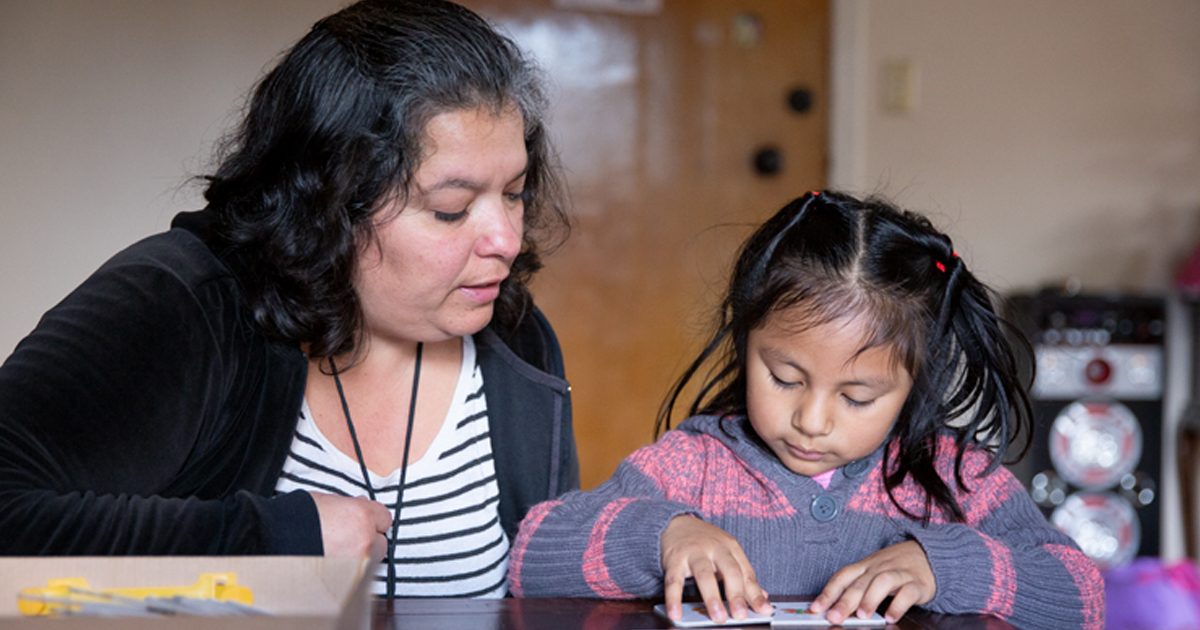Converting In-Person Activities to Distance Learning Activities
Posted on

Written by WestEd’s Melissa S. Cheung and Jennifer Folsom
Many of the strategies educators and leaders use during in-person settings can also be used in the distance learning environment — they just look a bit different.
Meeting each other and ice-breakers such as, “raise your hand if you…,” or “choose a postcard and use it to introduce yourself”
In digital meetings, create a poll or survey with some ice-breaker questions and publish the results. Alternatively you can ask participants to use a virtual background or hold up an object in their home and share their name, role, and the reasons for their choice. If there are a large number of people in the meeting, you might do introductions in breakout rooms or share a slide and allow participants to use the platform’s annotate tool to cast votes or add words and drawings. In asynchronous environments, you might ask participants to upload a picture of themselves in a favorite location and explain their choice.
Discussing topics in small groups or pairs
In digital meetings, you can group participants into breakout rooms. This can be done randomly, or you can collect information about them ahead of time and preassign groups based on interests or prior experiences (e.g., by including questions in the meeting registration process or administering a pre-meeting survey).
In asynchronous environments, you can break your large group into teams and have each team interact with one another around an online discussion forum prompt in their own space. This keeps the conversation more focused and personal rather than if large numbers of participants work in the same prompt space, and thus boosts engagement.
Generating content collaboratively in small groups
In digital meetings, establish breakout rooms and then designate one participant in each breakout room as the small group facilitator. Have this facilitator share their screen and capture notes from the group discussion in an online collaborative document (e.g., Google Doc or Google Slide). Providing preformatted documents, or slides, ensures that each small group generates the type of content desired and makes comparing content across small groups easier.
This same technique can be used in an asynchronous environment. By enabling the comments feature in online collaborative documents, participants can comment on the content added by other participants.
Using a pointer to highlight where to focus on a chart or on a screen
In digital meetings, you can use the platform’s annotate tools live as you speak to add drawings or marks to the screen you are sharing, allowing you to call attention to specific parts of your screen.
Giving a demonstration such as drawing, solving problems, using tools, and/or delivering a lecture with or without slides
To give a demonstration during a digital meeting, you will likely need an external camera. Position the camera to record your hand (e.g., solving a math problem on paper with a thick marker, repairing an engine) or your body (e.g., dance instruction). Check to see if you have the option of screen mirroring so that your text and body position are oriented the correct way for viewers (if you are referring to right and left, for example). Be creative in how to position your phone (e.g., selfie stick, suspended above your work). You can also use your smartphone to record yourself doing these things ahead of time.
If you want to show something on your computer screen (e.g., slides, a process for doing something) and record yourself talking at the same time, you can use a screencast application (e.g., Screencastify, Screencast-o-Matic). You can also go into a digital meeting platform (e.g., Zoom) and lead a meeting with just you presenting, and record it.
Sharing these videos either in your live meetings or posting them in asynchronous environments is ideal for when you need to do the work somewhere other than where you are hosting your digital meeting (e.g., a lab, workroom) and it reduces your cognitive load during your digital meeting, making it so you only have to focus on situating the video and following up on the video.
If your videos need advanced editing, try a free video-editing application (e.g., Davinci Resolve).
These same video techniques can be used by distance learners to record where they are getting stuck and document their processes for instructors to provide feedback on.
Sharing content
In digital meetings, present video content in short segments (no more than 5 minutes each) and then use a content processing activity (e.g., answer participant questions and highlight connections to previous discussions, allow participants to discuss in breakout rooms, co-create a Google Slide with individual takeaways, annotating an image, chart, or graph).
In asynchronous environments, posting content as a PDF (with comments enabled) or as a Google Doc or Slide (that is view only, but has comments enabled), allows participants to take in content and begin to process it. Videos work especially well in asynchronous learning environments because participants can control the speed, watch them repeatedly, and comment on them.
Collecting feedback and exit tickets
In digital meetings, participants can provide feedback or answer questions in the chat window or via an in-platform poll. You can also send out a link to a survey (e.g., Google Forms, Survey Monkey) or a link to a preformatted collaborative document (e.g., Google Doc) where people can enter feedback or answer an exit ticket question. Some online meeting platforms also have icons participants can click that indicate they have their hand raised, want to go faster/slower, or say thank you. The specific choice you make often depends on whether you want feedback to be anonymous or not.
Melissa S. Cheung is a Digital Solution Strategist at WestEd who uses research, technology, and collaborative pedagogy to create rich digital learning.
Jennifer Folsom is the Lead Learning Architect for the Making Sense of SCIENCE project at WestEd and lifelong advocate of respectful, collaborative teaching and learning.
